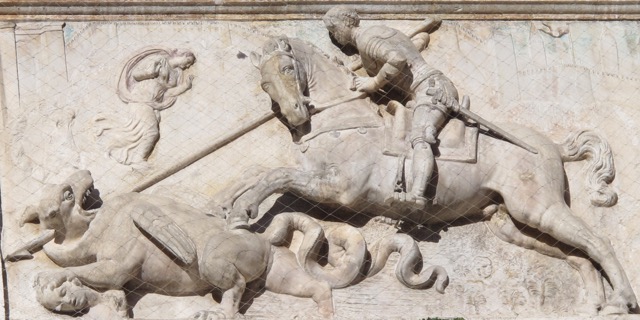‘Change and decay in all around I see’, as Evelyn Waugh’s Uncle Theodore cheerfully sang (‘Old Lang Syne’); or, to cite another famous author, ‘all that moueth, doth in Change delight’. This editorial marks our last issue of The Spenser Review. Read more…
There are only two uses of the word “globe” in Spenser’s Faerie Queene – in stark contrast to the over two hundred forms of “world” scattered across the poem. Both, perhaps surprisingly, are hidden within elaborate similes that presage their own shattering. Read more…
Recently, as I was idly scrolling through social media posts before a day’s work, something caught my eye: a post by a restaurant in Britain which solemnly announced, ‘Here she is … Our menu in all her glory’. As a French native speaker in whose mother tongue the word ‘menu’ is grammatically masculine, I would not have expected a female personification of an inanimate “masculine” noun. As a specialist of English, I might have expected a neutral pronoun instead, and would not have been surprised to read ‘Here it is … Our menu in all its glory’. As a Spenserian, I should have known better. Read more…
A goodly Lady clad in scarlot red,
Purfled with gold and pearle of rich assay
And like a Persian mitre on her hed
She wore, with crownes and owches garnished,
The which her lauish louers to her gaue. (The Faerie Queene, I.2.13.2–6)
This description of Duessa’s outfit in the scene of her first encounter with the Redcrosse knight in Book I of The Faerie Queene gets primarily glossed in Spenser editions as an anti-Catholic reference. Indeed, the mitre and scarlet both recall a bishop’s outfit and that of the Whore of Babylon in Revelation 17.4, ‘arraied in purple and skarlet, and gilded with gold and precious stones and pearles’ in the Geneva version. Read more…
With contributions by William N. West, David Lee Miller, Adam Smyth, Leah S. Veronese, Jeff Dolven, Leah Whittington, David Landreth and Kat Addis. Read more…
I met Judith H. Anderson in the fall semester of 1982, my first as a graduate student at Indiana University, Bloomington. My final visit with Judith was this past June, in Bloomington, forty years after I took her ‘Spenser and Milton’ course. In those forty years, Judith became my friend, one with whom I shared my thoughts and my critical writing, as she did with me. Read more…
Many will know of the origins of our online publication, The Spenser Review in the quarterly hard-copy Spenser Newsletter, serving International Spenser Society members globally since – it is hard to believe – the 1960s. All of the past editions since 1970 can be accessed on Spenser Online as PDFs, the makings of an enjoyable afternoon’s reading. For an outgoing editor of the online format, it is humbling to scan through the Fall 1970 issue. Read more…

Bas relief from the exterior of the Scuola San Giorgio degli Schiavoni in Venice. Photo courtesy of Roger Kuin.
- Rachel Eisendrath, Gallery of Clouds —
- Andrew Hadfield, Literature and Class: From the Peasants’ Revolt to the French Revolution —
- Victoria M. Muñoz, Spanish Romance in the Battle for Global Supremacy: Tudor and Stuart Black Legends —
- Elizabeth L. Swann, Taste and Knowledge in Early Modern England —
- Pascale Drouet, Shakespeare and the Denial of Territory: Banishment, Abuse of Power and Strategies of Resistance —
- Joe Moshenska, Making Darkness Light: The Lives and Times of John Milton —
- Wendy B. Hyman, Impossible Desire and the Limits of Knowledge in Renaissance Poetry —
- Cora Fox, Bradley J. Irish and Cassie M. Miura, eds., Positive Emotions in Early Modern Literature and Culture —
- Cassandra Gorman, The Atom in Seventeenth-Century Poetry —
- Andrew Hiscock, Shakespeare, Violence and Early Modern Europe —
